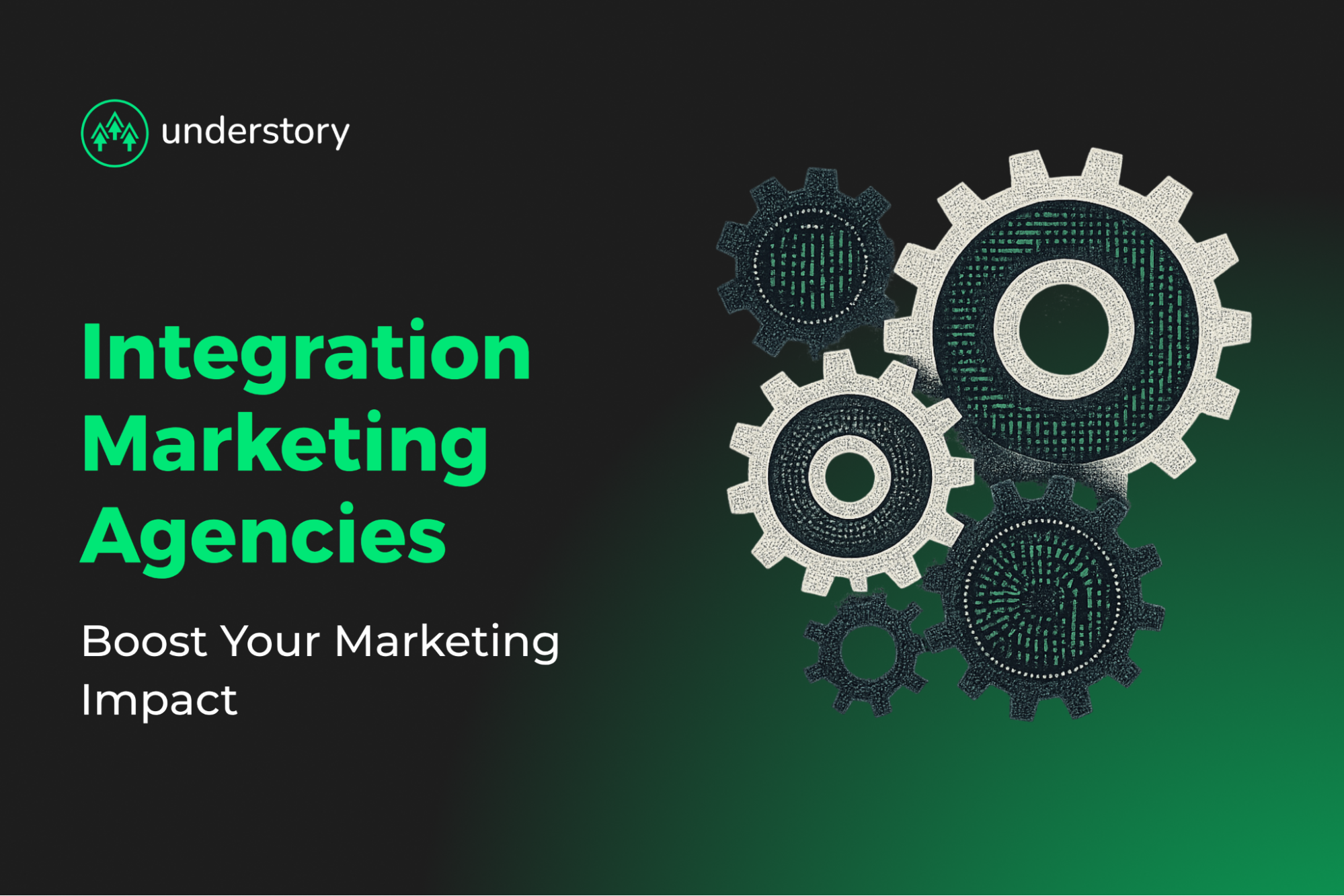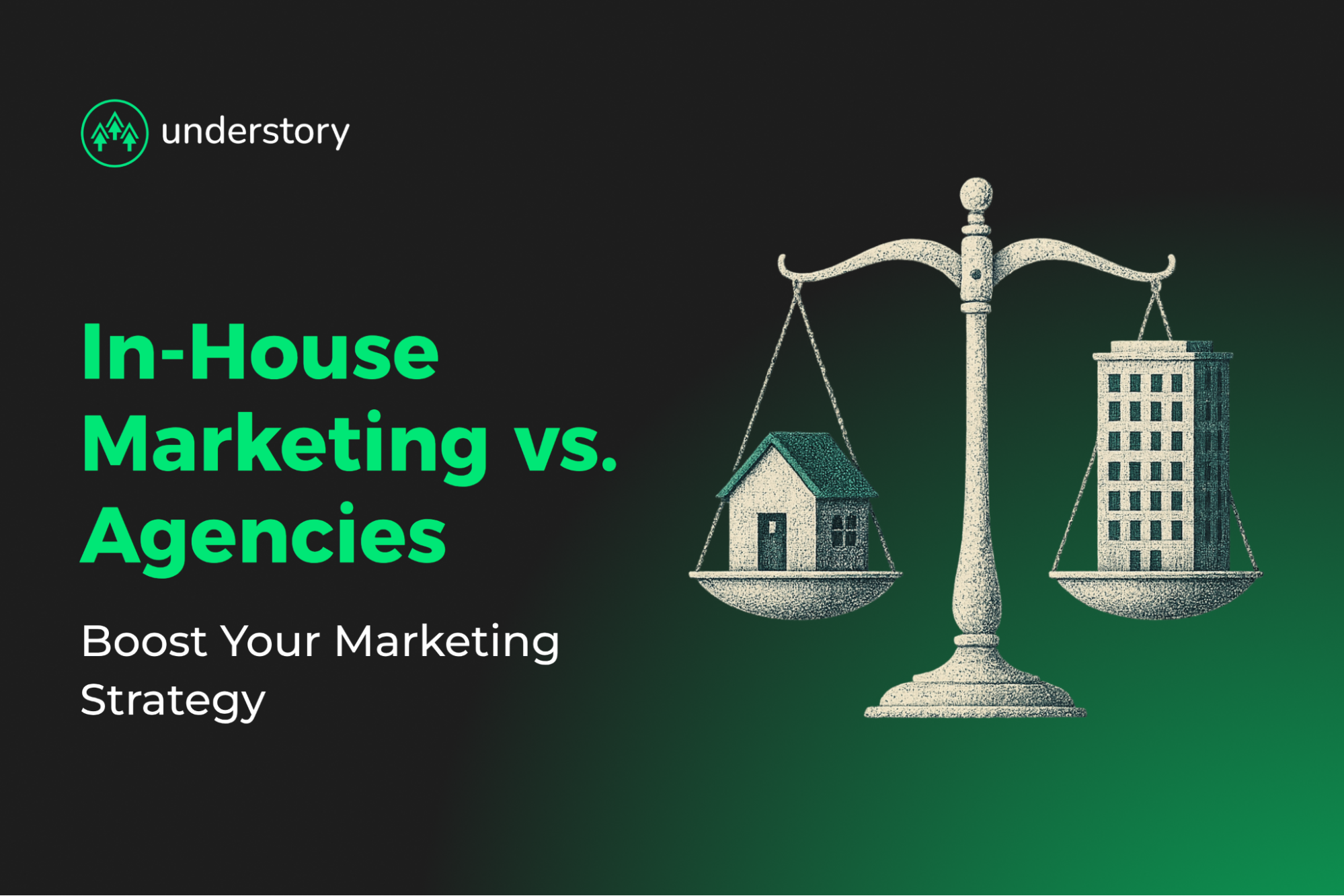

What is revenue attribution? Models and implementation guide
"Which marketing investments actually drove revenue?"
Most marketing leaders have heard that question. The answer lies in revenue attribution. Revenue attribution helps companies connect the dots between marketing activities and sales outcomes. Instead of guessing whether an ad, an email, or a webinar contributed to a deal, you can see which touchpoints played a role and how much credit each deserves.
This is especially important for B2B SaaS companies, where the buyer journey is long and involves multiple interactions. Companies using structured attribution models can improve ad spend efficiency and build stronger alignment between sales and marketing.
In this guide, we’ll break down:
- What revenue attribution is
- Different attribution models (single-touch and multi-touch)
- How to choose the right model for your business
- A step-by-step implementation guide
By the end, you’ll not only understand which model fits your business best but also have a roadmap to implement attribution in a way that drives smarter marketing decisions and more revenue.
What is revenue attribution?
Revenue attribution is the process of linking revenue back to the marketing activities that influenced it.
Let’s say a customer saw your LinkedIn ad, read a blog post, attended a webinar, and then requested a demo. Attribution would reveal the whole story, showing how each touchpoint contributed to the final sale.
In contrast, conversion tracking would only show you that a certain action happened. In the example above, you’d only see the demo request.
Without this broader view, you risk putting too much budget into “last-click” activities like retargeting ads, while undervaluing top-funnel investments like content or awareness campaigns.
Why revenue attribution is important
Revenue attribution shows you which marketing touchpoints actually contribute to closed deals and revenue, not just top-of-funnel metrics like clicks or form fills.
When done well, attribution helps:
- Optimize budget allocation, so you can spend more where revenue impact is highest
- Improve forecasting, so you can see which channels create pipeline and revenue reliably
- Align sales and marketing to end debates about which team drove the deal
- Scale winning combinations by identifying when paid media and outbound sequences work together to accelerate deals (what we call "allbound marketing")
Without proper revenue attribution, you could be making critical budget decisions without visibility into what actually drives business outcomes. You might double down on channels that generate cheap leads but terrible conversions, while underinvesting in touchpoints that influence your highest-value prospects.
For B2B SaaS companies with long sales cycles and complex buying committees, this misallocation can cost hundreds of thousands in lost revenue.
3 single-touch revenue attribution models
Single-touch attribution gives 100% of the credit to one interaction in the customer journey. It’s simple, easy to set up, and works well if your sales cycle is short (under 90 days) and your channel mix is small (fewer than four).
| Strengths | Weaknesses |
|---|---|
| Fast, low-cost implementation | Ignores most of the buyer journey |
| Works well for short, linear funnels | Fails in multi-channel, >90-day sales cycles |
| Easy for stakeholders to understand | Can misallocate the budget to the credited touchpoint |
Below, you'll see how the three most common single-touch variants work and when each one makes sense.
1. First-touch attribution
First-touch attribution hands 100% of revenue credit to the very first interaction recorded in your tracking stack. It works best when your primary goal is demand generation or brand awareness because you're measuring which channels spark new relationships.
This model is perfect for understanding which campaigns introduce buyers to your brand while ignoring the nurturing and conversion touchpoints later in the journey.
2. Last-touch attribution
Last-touch flips the script, assigning all credit to the final interaction before conversion. It's the go-to lens for performance marketers because it highlights the tactics that close business today.
This model is ideal for bottom-funnel optimization, flash promotions, or any scenario where the closing move is decisive and measurable. But it undervalues earlier interactions that build trust and intent.
3. Last non-direct click
Google Analytics 4 defaults many reports to a "last non-direct click" model. When someone visits your site by typing your URL directly into their browser (called "direct traffic"), GA4 doesn't count that as the converting touchpoint.
Instead, it gives credit to the most recent identifiable marketing channel that brought them to your site, like a Google ad, LinkedIn post, or email campaign. This prevents direct visits from claiming credit when they're really just the final step after your marketing did the heavy lifting.
For businesses whose buyers bookmark product pages or return via saved links, the last non-direct click delivers cleaner insights than pure last-touch. You'll still know whether paid search or an email drove that final push, rather than logging it as "direct."
This model difference often confuses teams comparing GA4 to other tools, leading to mismatched reports and budget debates. That said, this model attributes zero recognition to early-stage and mid-funnel activity. So if your growth strategy leans heavily on brand or content marketing, consider this model a temporary convenience, not a long-term compass.
6 multi-touch revenue attribution models
Multi-touch attribution spreads credit across all touchpoints in the journey. It’s more complex but far more realistic for B2B businesses with 90+ day sales cycles and five or more channels. A few different multi-touch revenue attribution models are:
1. Linear attribution
Linear models give every touchpoint, from first ad impression to final contract signature, an equal slice of the revenue pie. Every interaction gets the same credit, which works when your nurturing rhythm is steady and each touch plays a comparable role.
Picture a B2B software sale where a prospect clicks a LinkedIn ad, downloads a white paper, attends a product webinar, and books a demo. With linear attribution, a $100k deal assigns $25k to each touch. Linear is easy for stakeholders to grasp and far richer than first- or last-touch reporting. The downside is bluntness: treating an early-stage blog visit as equally influential as a pricing call masks the true catalysts in your pipeline.
2. Time-decay attribution
Time-decay models weight touches based on recency, meaning the closer an interaction is to the conversion date, the more revenue it receives. Credit decreases with time, typically using a seven-day "half-life" where a touchpoint's value halves every week.
This approach works well in enterprise deals where late-stage actions like product trials, proposal reviews, and procurement approvals tend to tip the scales. In a six-month sales cycle, the contract-signing meeting might capture 30% of credit, the negotiation call 20%, and that early awareness webinar just 3%. Time-decay surfaces the touches you can actively optimize near close. The limitation: foundational brand or education activities often look underwhelming, even when they lit the spark months earlier.
3. U-shaped (position-based)
U-shaped models assign roughly 40% of revenue to the first touch, 40% to the lead-creation touch, and spread the remaining 20% across everything in between. This balanced approach works when both demand generation and lead capture are mission-critical.
Take a company that warms prospects with a podcast, then converts them when they sign up for a product tour. Under U-shape, a $50k win would allocate $20k to the podcast episode, $20k to the tour registration, and $10k to nurturing emails and retargeting ads. You reward the spark that puts you on the radar, and the moment someone raises their hand, while still valuing mid-funnel touchpoints.
4. W-shaped
The w-shape model adds opportunity creation to the U-shape. Credit typically flows 30% to the first interaction, 30% to lead creation, 30% to the touch that converts a lead into a sales opportunity, with the last 10% sprinkled over the rest.
If your CRM stages run from Lead → MQL → SQL → Opportunity → Closed Won, W-shape mirrors that journey. A prospect who clicks a trade-show QR code (first), downloads a pricing guide (lead), and books a discovery call (opportunity) would see those three events dominate the revenue share. You can pinpoint which campaigns generate pipeline, not just leads.
5. Full-path
Full-path attribution extends W-shape by also rewarding the closing interaction. One common split assigns 22.5% of revenue to first touch, lead creation, opportunity creation, and deal close, leaving 10% for assists.
6. Custom or data-driven models
Custom or data-driven attribution lets machine-learning algorithms study historical journeys and allocate credit according to real-world impact rather than preset rules. This approach identifies patterns humans can't, surfacing nonlinear paths and micro-interactions you might otherwise overlook.
You need thousands of conversion records, diligent UTM tagging, and data science muscle to interpret the outputs. When those ingredients are in place, data-driven models can reveal that a niche community post consistently doubles win-rates even though it rarely sits first or last in the journey.
How to choose the right model
To pick an attribution model, you need a structured filter that reflects how your buyers actually buy. You can rely on a three-step decision framework.
Start by assessing sales-cycle length. Short cycles (think impulse e-commerce) rarely justify multi-touch complexity, while a six-month B2B deal almost always does.
Next, evaluate channel complexity. If you operate on two or three channels, single-touch might suffice. The moment you add webinars, paid social, partner referrals, and ABM ads, multi-touch becomes table stakes.
Finally, identify primary KPIs. Are you optimizing for early-stage awareness or revenue at the point of close? Your answer determines whether first-touch, last-touch, or weighted models make more sense.
The matrix below shows how these variables map to common model choices:
| Sales cycle | Channel count | Primary KPI | Business type | Recommended model |
|---|---|---|---|---|
| ≤30 days | ≤4 | Conversions | B2C / SMB | Last-touch |
| ≤30 days | ≤4 | Awareness | B2C / SMB | First-touch |
| 30–90 days | 5–7 | Revenue | SMB / Mid-Market | Linear |
| 90–180 days | 5–10 | Pipeline Velocity | B2B SaaS | Time-decay |
| >180 days | 10+ | Full ROI | Enterprise B2B | W-shaped or Data-driven |
Notice how the model recommendation scales with both journey length and channel variety. For example, a mid-market SaaS company nurturing leads for 120 days will glean more insight from time decay than from a last-click view that ignores months of nurturing.
Test two models in parallel for 30–60 days to find the best fit. Running models side-by-side surfaces discrepancies before you lock in a reporting methodology.
Use the checklist below to sanity-check readiness before committing engineering hours:
- Do we have clean CRM and web analytics data for every stage of the funnel?
- Can we confidently stitch sessions across devices and domains?
- How many channels meaningfully influence our pipeline today?
- Which metric matters most to leadership?
- Do we possess the tooling and talent to maintain a more sophisticated model?
- Are we prepared to revisit the model quarterly as buying behavior shifts?
Answering these questions up front spares you months of rework and sets the foundation for attribution that actually drives smarter budget allocation.
How to set up reliable revenue attribution
Setting up reliable revenue attribution typically takes at least one quarter. As your data grows and buyer journeys evolve, your model will require ongoing refinement.
Implementation usually unfolds in four stages: data audit and cleanup, platform configuration, parallel testing, and ongoing optimization. Most delays happen in the first two stages, often due to hidden data gaps or unexpected integration issues.
The best approach is iterative, meaning you launch a minimum viable model first, then add sophistication once the foundations are stable.
Step 1: Prep your data stack
Start by centralizing every customer interaction into a unified warehouse or CRM. Clean, connected data is the single biggest predictor of attribution success.
Use this readiness checklist:
- CRM hygiene: Deduplicate contacts, enforce a unique identifier (usually email), and make sure deal values are always populated
- UTM discipline: Mandate a standard naming convention so campaigns aren't split into dozens of tiny buckets
- Cross-domain tracking: Leverage first-party data and machine learning to stitch browsing sessions together
- Lead-to-customer mapping: Confirm every opportunity in your CRM links back to a marketing contact record; otherwise, revenue will appear from "nowhere"
Before importing historical data, run a spot check: compare a sample of orders against marketing touchpoints. If touch data is missing or inconsistent, fix that first.
Step 2: Tool setup
With data foundations laid, configure the analytics platforms that will crunch the numbers.
- GA4: Enable Enhanced Measurement and use the Model Comparison report to test different attribution models. Ensure all conversion events include revenue values.
- Marketing automation & CRM: Create unique campaign IDs for every touchpoint (ads, emails, webinars) and sync them automatically when leads become deals.
- Revenue attribution platforms: Consider specialized tools like HockeyStack or Fibbler (tools that Understory uses) built for B2B revenue attribution. These platforms excel at tracking influence across complex buying journeys and can directly attribute pipeline generation to specific campaigns and touchpoints.
- Data pipelines: Set up daily syncs between tools and monitor integration health regularly to identify problems like broken connections that can cause attribution gaps.
Most attribution failures happen during setup, not analysis. Take time to test each connection with sample data before moving to the next step.
Step 3: Test, Tune, Optimize
Resist the urge to declare victory the moment dashboards light up. Run at least one full sales cycle with two models in parallel to expose discrepancies, then reconcile them.
During the test, watch for:
- Data Gaps: Missing offline calls or demo bookings can skew multi-touch results. Tools like HockeyStack and Fibbler specialize in capturing these offline interactions and connecting them to your digital touchpoints.
- Edge Cases: Cross-device journeys, ad blockers, or dark social shares often leave "orphan" sessions. Patch with identity resolution or qualitative inputs.
- Campaign Influence Tracking: Use platforms designed for B2B attribution to measure how campaigns influence pipeline even when they don't get last-click credit. This is where tools like Fibbler excel at showing the broader impact of your marketing efforts.
- Model Drift: When new channels launch, run a quick audit to ensure tags and revenue values pass through.
Schedule a quarterly review to decide whether to keep, adjust, or upgrade your model.
Measuring Success & Proving ROI
Once your model is live, you need to start demonstrating that revenue attribution is improving outcomes rather than just creating more reports. Track these metrics to ensure attribution drives results:
- ROI Uplift: Increase in marketing ROI after attribution rollout.
- Attribution Accuracy: % of deals with complete touch histories.
- Budget Reallocation Efficiency: Share of budget moved to better-performing channels.
- Revenue Impact of Decisions: Incremental revenue from attribution-driven changes.
Dashboards should translate these calculations into stories your stakeholders already understand: pipeline, revenue, and margin. Build a single "Attribution Executive" view that surfaces:
- A waterfall chart showing how revenue is redistributed when you switch from last-click to multi-touch credit
- A funnel overlay comparing pre- and post-implementation CPA to illustrate efficiency gains
- A heat map of channel spend versus attributed revenue that highlights quick wins for reallocation
Presenting insights varies by audience. Finance wants hard numbers, so lead with ROI uplift and budget-shift outcomes. Sales leadership cares about deal velocity; show them how attribution identifies touchpoints that shorten the cycle. For the board, summarize the annualized revenue impact and the percentage of the budget now backed by provable returns.
From Insights to Action: Power Your Growth with Understory
Understanding revenue attribution is just the beginning. The real value comes from using these insights to shape smarter campaigns, better creative, and more efficient outbound strategies.
That’s where Understory can help. We specialize in allbound marketing, which seamlessly blends:
- Paid Media Management to maximize ROI from every channel
- Hyper-Personalized Outbound Campaigns to turn insights into pipeline
- Graphic Design on Demand that aligns with attribution-driven strategies
If you’re ready to connect the dots between marketing and revenue and turn attribution insights into measurable growth, explore our services today.




